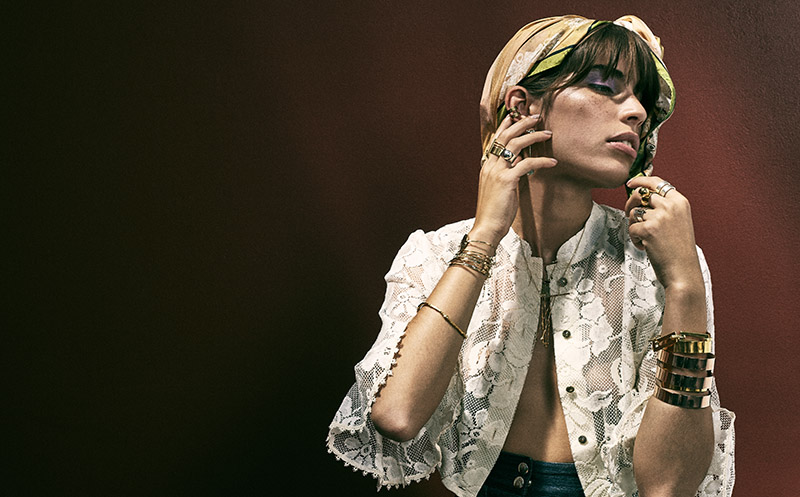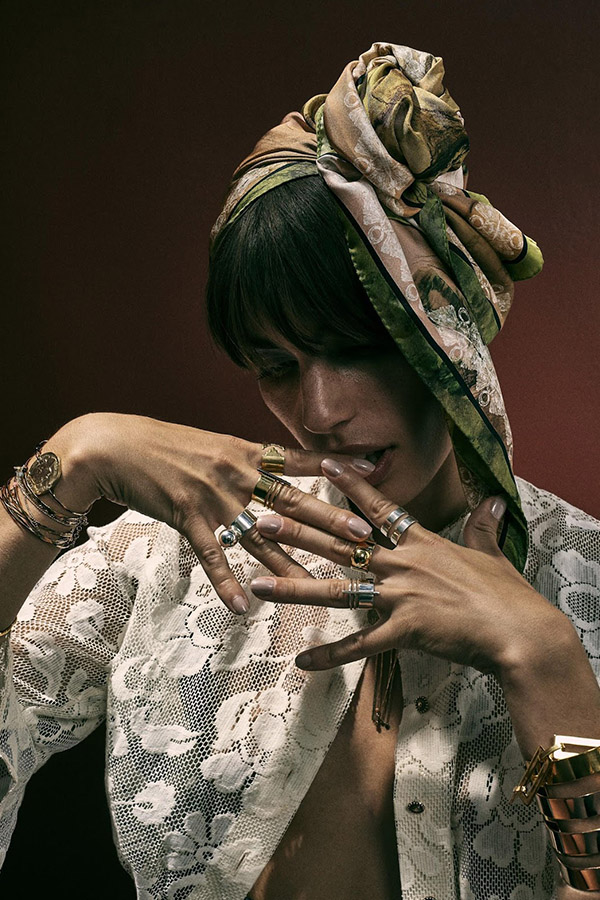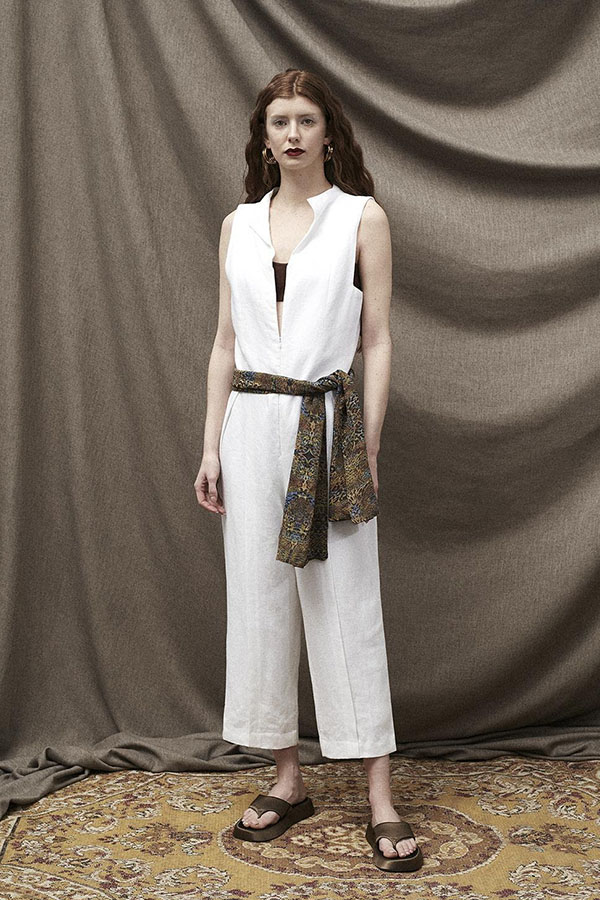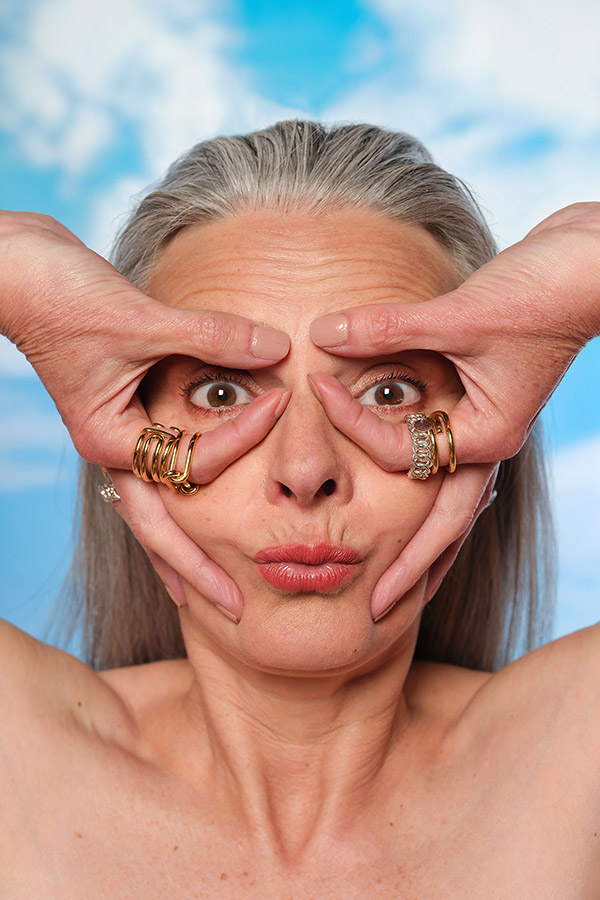
The scarf, a multicultural fashion object
The scarf has made a comeback in recent seasons! It is definitely the essential accessory in our wardrobe. A true style chameleon, the scarf can be worn in a thousand elegant ways, and adapts equally well to a feminine as well as a masculine wardrobe.
This ultra-trendy accessory adds a je ne sais quoi to our outfits to boost our style! Let’s see how to adapt this protean piece to create that tone that’s just ours.
Women and the headscarf, a timeless story
Impossible to date the appearance of the scarf: since the invention of weaving, women have used a piece of cloth to protect their hair or as a fashion accessory. Examples of this can be found up to the time of ancient Egypt and on all continents.
Along with its history as a fashion accessory, the headscarf is also a sign of religious respect: Muslim women use it to protect their hair from prying eyes, like Orthodox Jews or Christian sisters.
In France, the word “scarf” comes from the Provençal “foulé”, which means light fabric. In the 18th century women, especially peasant women, covered their heads with it to protect themselves from the sun. From the following century, the use of this piece of fabric became more varied: it was worn around the neck, like a charming accessory.
Also in the 19th century, a new fashion accessory appeared: the printed handkerchief. The women would drop it for the gallant men to return it to them and thus initiate a conversation. This handkerchief adopts different sizes and as it grows it gets closer to the scarf.
These are the men who wear these handkerchiefs on their necks first. The soldiers – many of whom were still illiterate – wear handkerchiefs printed with illustrated instructions. At the turn of the 20th century, women adopted it around the neck.
In 1937, the scarf experienced its revolution: Robert Dumas, director of the Hermès house, created the illustrious Hermès scarf, this silk scarf whose chic is now timeless.
The first half of the 20th century gave this accessory its fashion credentials that we know today. Hollywood stars wear the head scarf, tied under the chin or wrapped around the neck as early as the 1940s – like Grace Kelly – or as a thin band tied around the neck – like Audrey Hepburn.
From the 1960s, its use diversified. Designer Emilio Pucci has created his own version of the brightly colored scarf, which covers the head and ties behind, the fluid material blending into the hair. The scarf can also be worn like a belt, decorating uninhibited outfits from the years of flower power.
How to wear the scarf?
There are two distinct styles of scarves: the square – of different sizes, which is similar to the handkerchief – and the long scarf – resembling an ethol. Both come in many materials, like silk, cotton, polyester, etc. and an infinity of colors and patterns.
To wear them, let our inspiration speak!
The Bardot-style scarf is making a comeback: worn on the head, it is tied behind the neck under the hair. But we are free to wear it tied directly under the chin, for a style reminiscent of the Golden Age of Hollywood and that of Queen Elisabeth II during her stays in the countryside.
Always tied behind the head, the scarf takes on rock accents by covering the entire top of the head. It can also be worn as a chic piece as a headband or as an accessory in a ponytail.
Obviously, the scarf is also worn around the neck! Rolled like a tassel, folded according to our desires – or our culture, in a scarf … the scarf is even a tie! We put it casually over our shoulders like a shawl to cover us up when the summer temperature cools down after dark.
For the more adventurous among us, it also becomes a top to tie, creating a charming halterneck. Or a colorful belt. We have even seen some celebrities wearing the headscarf as a sanitary mask during the pandemic … An idea as bad aesthetically as it is sanitary!
At AÉ, the brand of feminine accessories Bresma offers scarves in the direct lineage of the famous Hermès scarves. Woven of silk, these large squares with original patterns are colorful or dark, but proudly claim a style that is both chic and rock.
For Armance and Apolline, the scarves are refined adornments to wear in all ways, for men as for women. In the hair as a headband or in the neck as a tie, the scarf accompanies each of our desires.
Reclaiming the scarf, a fashion and political statement?
In May 2020, singer Rihanna – an essential fashionista figure – made the front page of Vogue UK. Her hair is fully retained under a black rammer. The title “Rebel! Obviously refers to the story of the black headscarf worn by some black men in the United States, labeled as thugs. The fashion planet is reappropriating codes to transform them.
The history of the headscarf as a fashion headgear is loaded with religious and political connotations. In France, not a year goes by without a controversy over the wearing of the veil for Muslim women.
In 2018, Gucci created a scandal at Milan fashion week by parading white models wearing Sikh turbans. The questions surrounding cultural appropriation are once again springing up: the fashion industry needs to reflect on its use of certain cultural elements – especially when these elements come from discriminated communities.
Wearing a headscarf is therefore presented as a statement, a way of asserting a claim or raising questions.
But the headscarf is also a multicultural image: peasant women all over the world have worn or still wear the famous headscarf. Eastern European women are known for their shawls or scarves with floral and colorful patterns!


